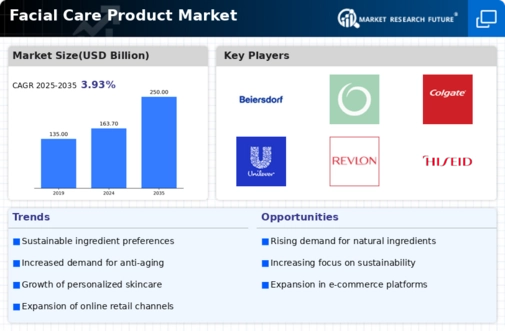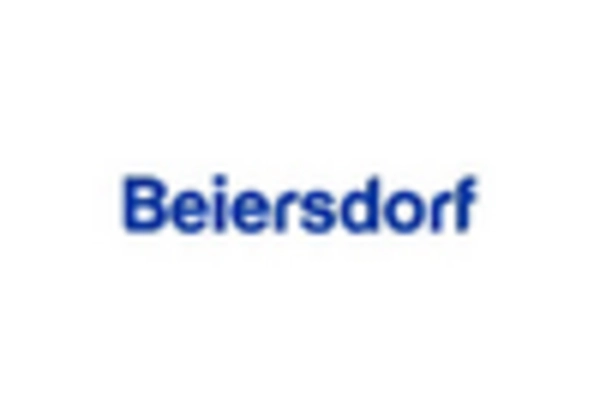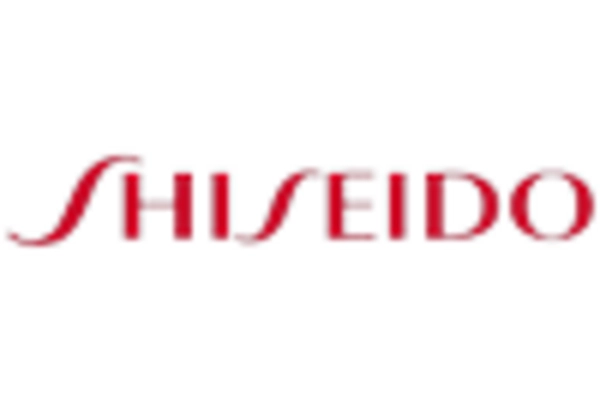Demand for Anti-Aging Products
The demand for anti-aging products remains a strong driver within the Facial Care Product Market. As populations age, particularly in developed regions, there is a growing emphasis on maintaining youthful skin. Consumers are increasingly seeking products that promise to reduce the appearance of fine lines, wrinkles, and other signs of aging. Market analysis indicates that the anti-aging segment is expected to account for a substantial share of the facial care market, with projections suggesting it could reach over 30 billion dollars by 2027. This trend is likely to encourage innovation in formulations and ingredients, as brands strive to meet the evolving needs of an aging demographic.
Expansion of E-commerce Platforms
The expansion of e-commerce platforms is reshaping the landscape of the Facial Care Product Market. With the increasing prevalence of online shopping, consumers are now able to access a wider array of products than ever before. This shift has been accelerated by advancements in technology and logistics, making it easier for brands to reach their target audience. Data suggests that online sales of beauty products are projected to grow at a rate of 10% annually, outpacing traditional retail channels. As a result, brands that invest in robust online strategies and user-friendly shopping experiences are likely to capture a larger share of the market, driving overall growth in the facial care sector.
Increasing Awareness of Skin Health
The rising awareness of skin health among consumers appears to be a pivotal driver for the Facial Care Product Market. As individuals become more informed about the effects of environmental factors and lifestyle choices on skin health, there is a noticeable shift towards preventive skincare. This trend is reflected in the growing demand for products that offer protection against UV rays, pollution, and other harmful elements. Market data indicates that the facial care segment is projected to grow at a compound annual growth rate of approximately 5.5% over the next five years. This growth is likely fueled by consumers seeking products that not only enhance appearance but also promote overall skin wellness, thereby expanding the market for facial care products.
Rise of Clean and Natural Ingredients
The rise of clean and natural ingredients is transforming the Facial Care Product Market. Consumers are becoming more discerning about the ingredients in their skincare products, often favoring those that are free from harmful chemicals and synthetic additives. This shift towards clean beauty is not merely a trend; it reflects a broader societal movement towards health and wellness. Market data indicates that products labeled as 'natural' or 'organic' are witnessing a surge in demand, with sales expected to grow significantly in the coming years. Brands that prioritize transparency and sustainability in their ingredient sourcing are likely to resonate with consumers, thereby enhancing their market position.
Influence of Social Media and Beauty Trends
The influence of social media and emerging beauty trends significantly impacts the Facial Care Product Market. Platforms such as Instagram and TikTok serve as powerful tools for beauty influencers and brands to showcase new products and techniques. This digital landscape fosters a culture of sharing skincare routines and product recommendations, which can lead to rapid shifts in consumer preferences. Data suggests that nearly 70% of consumers are influenced by social media when making beauty purchases. Consequently, brands that effectively leverage these platforms to engage with their audience are likely to see increased sales and brand loyalty, further driving the growth of the facial care market.


















Leave a Comment